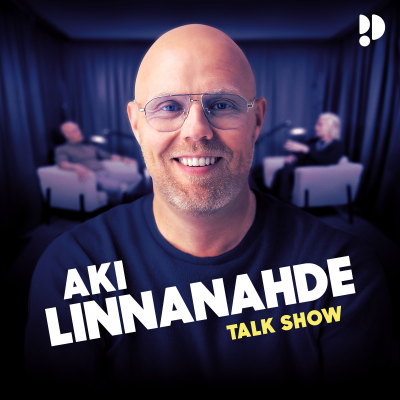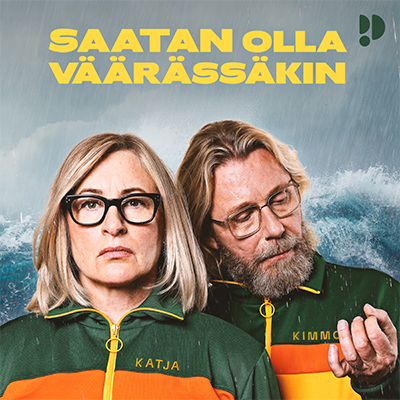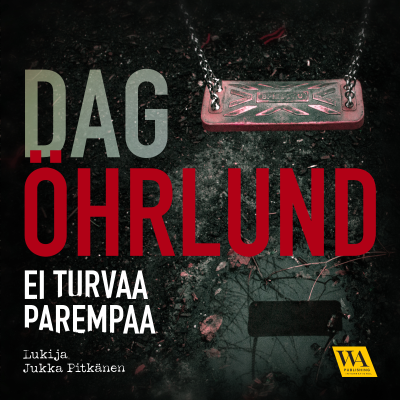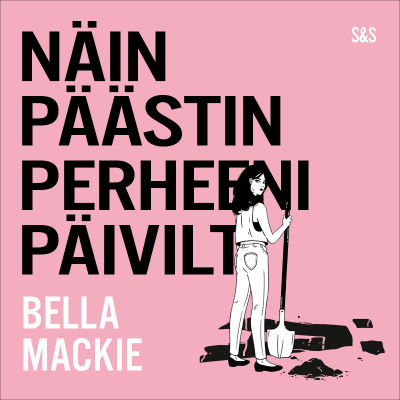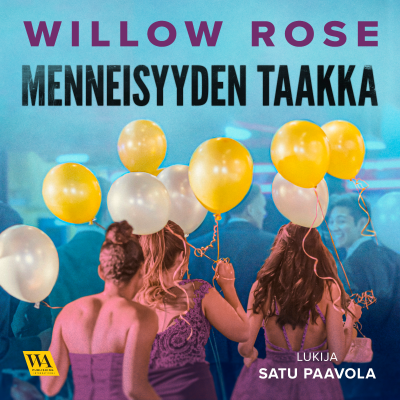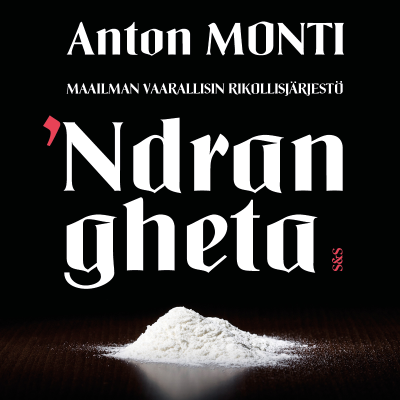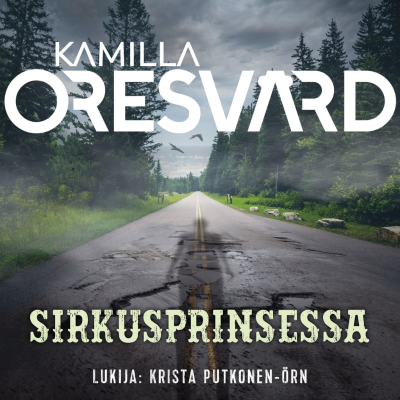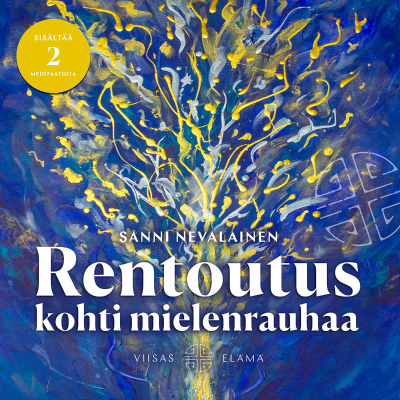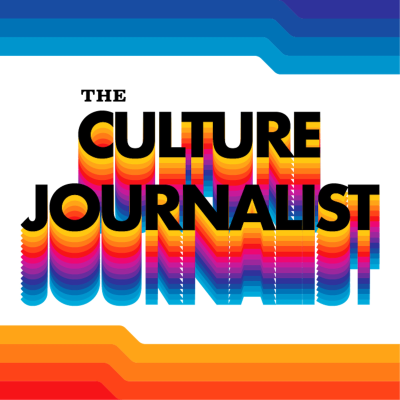
The Culture Journalist
Podcast by The Culture Journalist
90 vrk ilmainen kokeilu
Kokeilun jälkeen 7,99 € / kuukausi.Peru milloin tahansa.

Enemmän kuin miljoona kuuntelijaa
Tulet rakastamaan Podimoa, etkä ole ainoa
Arvioitu 4.7 App Storessa
Lisää The Culture Journalist
Cathartic conversations about culture in the age of platforms, with Emilie Friedlander and Andrea Domanick theculturejournalist.substack.com
Kaikki jaksot
57 jaksotWith a catalog full of art house favorites like The Witch, Spring Breakers, Moonlight, and Uncut Gems, it’s hard to deny that A24 occupies a unique position in the zeitgeist. In a Hollywood landscape that can feel like it’s becoming more risk-averse by the year — see our recent episode [https://theculturejournalist.substack.com/p/derivative-media-how-wall-street-devours-culture] with Andrew Dewaard on his book Derivative Media — the artist-forward distributor and studio has become synonymous with a dream that, to many American cultural producers, feels increasingly remote: the conviction that one can doggedly put quality art out into the marketplace and see it actually succeed. But is A24 singlehandedly saving American cinema, or is that just a carefully crafted illusion, more a testament to the importance of smart brand positioning than to the actual quality of the films in its catalog? We brought on the Las Vegas-based writer and critic Nicholas Russell [https://nicholasrussell.me/], author of an excellent essay for Dirt called “ The Popular Alternative: the State of A24,” [https://dirt.fyi/article/2025/05/the-popular-alternative]to discuss how the company evolved from an upstart indie film distributor to a studio and lifestyle brand in the mold of Disney — albeit one for adults who pride themselves in being savvy cultural consumers. We talk about how the company successfully commodified the idea of being “a cinephile,” the similarities between the A24 cap and the New York tote, and what Nicholas describes as the longstanding “tension between A24 the studio and A24 the startup” — one recently complicated by a $100 million cash injection from Josh Kushner’s Thrive Capital, a major investor in OpenAI. We also try to break down the ineffable A24 “feel” (including the aesthetic elements and political themes the company tends to foreground, and shy away from) and consider the rise of Neon — the distributor behind movies like Parasite, Anora, and How to Blow Up a Pipeline — as the “other popular alternative.” [https://dirt.fyi/article/2025/06/the-state-of-neon] Follow Nicholas on X [https://x.com/o_rinocoflow] and Substack [https://eemaildotcom.substack.com/] Read more by Nicholas here [https://theculturejournalist.substack.com/p/introducing-cujoplex-a-digital-third] Recommended reading about A24 and the Hollywood system from Nicholas: "The Life and Death of Hollywood" by Daniel Bessner (Harpers [https://harpers.org/archive/2024/05/the-life-and-death-of-hollywood-daniel-bessner/]) "A24's Risky Hollywood Moment" by Felix Gillette (Bloomberg [https://www.bloomberg.com/news/features/2024-02-22/a24-movies-become-private-equity-bet-with-225-million-infusion]) Hollywood: The Oral History by Jeanine Basinger and Sam Wasson (Harper Collins [https://www.harpercollins.com/products/hollywood-the-oral-history-jeanine-basingersam-wasson?variant=41038091845666]) This is a public episode. If you'd like to discuss this with other subscribers or get access to bonus episodes, visit theculturejournalist.substack.com/subscribe [https://theculturejournalist.substack.com/subscribe?utm_medium=podcast&utm_campaign=CTA_2]
This is a free preview of a paid episode. To hear more, visit theculturejournalist.substack.com [https://theculturejournalist.substack.com?utm_medium=podcast&utm_campaign=CTA_7] This is a free preview of a subscriber-only episode. If you sign up for a paid subscription between now and July 4, we’ll give you 50% off. For as long as any of us can remember, the NBA has been the cultural North Star of the United States. But according to Ock Sportello, author of a viral Substack article called “Toward a Unified Theory of Uncool,” [https://www.neverhungover.club/p/toward-a-unified-theory-of-uncool] the league has become a microcosm of the ways that economic risk aversion and image production in the age of social media are rendering the culture at large… increasingly swagless. To celebrate the final weekend of the NBA season, Emilie and boyfriend-of-the-pod/co-host of the excellent new show Macho Pod [https://machopod.substack.com/] Drew Millard brought on Ock to discuss how “aura” replaced “coolness,” the erasure of regional identity in the age of globalization, and what the basketball superstars of 2025 have in common with the West Village Girls [https://www.thecut.com/article/nyc-west-village-neighborhood-new-generation-women-girls.html].
From tariffs on foreign goods to scaling back on US military and humanitarian aid abroad, it’s clear that Trump is intent on moving the country in a more protectionist direction. But what does that look like for pop culture? Think: Kendrick’s “Not Like Us” as an anthem for our time, versus Drake collaborating with lesser-known grime and Afro-house producers during the Obama years. Critic Jaime Brooks — who you may also know for her work in musical projects like Elite Gymnastics and Default Genders — recently wrote an epic essay exploring the geopolitics of music and entertainment in 2025. The piece is called “Notes on the Canzukian Schism,” [https://jaimebrooks.substack.com/] and it’s an eye-opening look at the ways the European social welfare system, US military policy, and libertarian free market evangelism have shaped our experiences as both consumers and producers of pop culture over the past century. Jaime joins us to discuss how her Canadian upbringing — much like Marshall McLuhan’s and Drake’s — gave her a distinct perspective on media and culture in the Anglosphere. She takes us through the history of radio in the UK and US, and how it set the stage for both the genesis of Western pop music and the perennial question of whether art should be funded by markets or the state. We also talk about how the “poptimism vs. rockism” debate overlooks the material realities of the music industry, how being online and being literate have become two entirely separate things, and why community radio may be the last viable path forward for culture. Want to continue the conversation? For access to our member-only Discord (and the full edition of this episode), sign up for a paid subscription. Subscribe to Jaime’s Substack, The Seat of Loss [https://jaimebrooks.substack.com/] Read more by Jaime “American Sajaegi” (The New Inquiry [https://thenewinquiry.com/blog/american-sajaegi/]) “The Summer of Love and the Holy Fair” (The New Inquiry [https://thenewinquiry.com/blog/the-summer-of-love-and-the-holy-fair/]) This is a public episode. If you'd like to discuss this with other subscribers or get access to bonus episodes, visit theculturejournalist.substack.com/subscribe [https://theculturejournalist.substack.com/subscribe?utm_medium=podcast&utm_campaign=CTA_2]
In his new book, What’s Left: Three Paths Through the Planetary Crisis [https://www.hachettebookgroup.com/titles/malcolm-harris/whats-left/9780316577434/], writer Malcom Harris examines what is probably our most pressing existential paradox: Both individually and as a society, we’re all so caught up in the struggle to survive under capitalism that we’ve become incapable of taking decisive action to reduce our reliance on carbon and ensure our collective survival. Fortunately, as Malcom sees it, our fate isn’t sealed just yet. And What’s Left lays out, clearly and accessibly, what he sees as the three remaining options for saving the world. Malcolm joins us to talk about those strategies — which he calls marketcraft, public power, and communism — and why solving the climate crisis requires people from across the left pursuing all three of them in tandem. We also get into why more mainstream political philosophies — like the notion of “Abundance,” popularized by Ezra Klein and Derek Thompson and championed by centrist Democrats like Cory Booker — won’t help, largely because of a failure to engage with class politics. Finally, we zoom out to contemplate what political opposition even looks like in our increasingly inhospitable environment for free speech. Will the left will remain fragmented between Boomers shouting “Hands off NATO” at public protests while college students get arrested for peacefully protesting the atrocities in Gaza? Or is a broader coalition possible? Want to continue the conversation? For access to our member-only Discord (and all our bonus episodes), sign up for a paid subscription. Order What’s Left: Three Paths Through the Planetary Crisis [https://www.hachettebookgroup.com/titles/malcolm-harris/whats-left/9780316577434/] Follow Malcolm on X [https://x.com/BigMeanInternet] Read more by Malcolm: “What’s the matter with Abundance?” (The Baffler [https://thebaffler.com/latest/whats-the-matter-with-abundance-harris]) This is a public episode. If you'd like to discuss this with other subscribers or get access to bonus episodes, visit theculturejournalist.substack.com/subscribe [https://theculturejournalist.substack.com/subscribe?utm_medium=podcast&utm_campaign=CTA_2]
During the pandemic, it seemed like the internet, and specifically TikTok, was coughing up one fringe aesthetic after the next: Cottagecore! Trad Cath Coquette! Old Money! Coastal Grandmother! And of course, our personal fave, Dark Academia. We even did a whole episode on it [https://theculturejournalist.substack.com/p/dark-academia-biz-sherbert?utm_source=publication-search], as part of a larger examinatin of post-pandemic aesthetics. Fast forward to today, and the churn of social media-born aesthetics seems to have slowed somewhat, leaving behind a landscape that feels more fragmented and difficult to parse. So we’ve brought back our guest for that episode — style writer, trend forecaster, and bonafide Cool Girl Biz Sherbert [https://www.sherbert.biz/] — to give us a lay of the sartorial land. Along with continuing to co-host the influential fashion and culture podcast Nymphet Alumni [https://en.wikipedia.org/wiki/Nymphet_Alumni], and writing for places like The Face and AnOther Magazine, Biz recently launched a new publication called American Style on Substack (subscribe! [https://bizsherbert.substack.com/]), which she says is about “what people are really wearing and why.” If you’re a CUJO subscriber, you already got a little taste via our Coachella collab [https://theculturejournalist.substack.com/p/coachella-trend-report-2025] with American Style a couple weeks ago. Either way, you’re in for a treat: Biz joins us to talk about American Style’s origin story and what’s she’s learned from documenting what young people are wearing out in the real world, at places ranging from a Deftones concert in Atlanta [https://bizsherbert.substack.com/p/what-deftones-fans-are-wearing], to Disney World in Orlando [https://bizsherbert.substack.com/p/eating-dole-whip-in-rick-owens-646], to a rave in North London [https://bizsherbert.substack.com/p/raving-in-north-london]. We also get into the state of countercultural and subcultural fashion in 2025; why men and boys seem, for the first time in a long time, to be leading the style conversation; the role that festivals like Coachella play in the wider image-making ecosystem; and the strange staying power of the festival cowgirl. Subscribe to American Style [https://bizsherbert.substack.com/] and follow Biz on Instagram [https://www.instagram.com/bizsherbert/] (fka @marcfisherquotes). Listen to Nymphet Alumni on your pod platform of choice. This is a public episode. If you'd like to discuss this with other subscribers or get access to bonus episodes, visit theculturejournalist.substack.com/subscribe [https://theculturejournalist.substack.com/subscribe?utm_medium=podcast&utm_campaign=CTA_2]

Arvioitu 4.7 App Storessa
90 vrk ilmainen kokeilu
Kokeilun jälkeen 7,99 € / kuukausi.Peru milloin tahansa.
Podimon podcastit
Mainoksista vapaa
Maksuttomat podcastit
